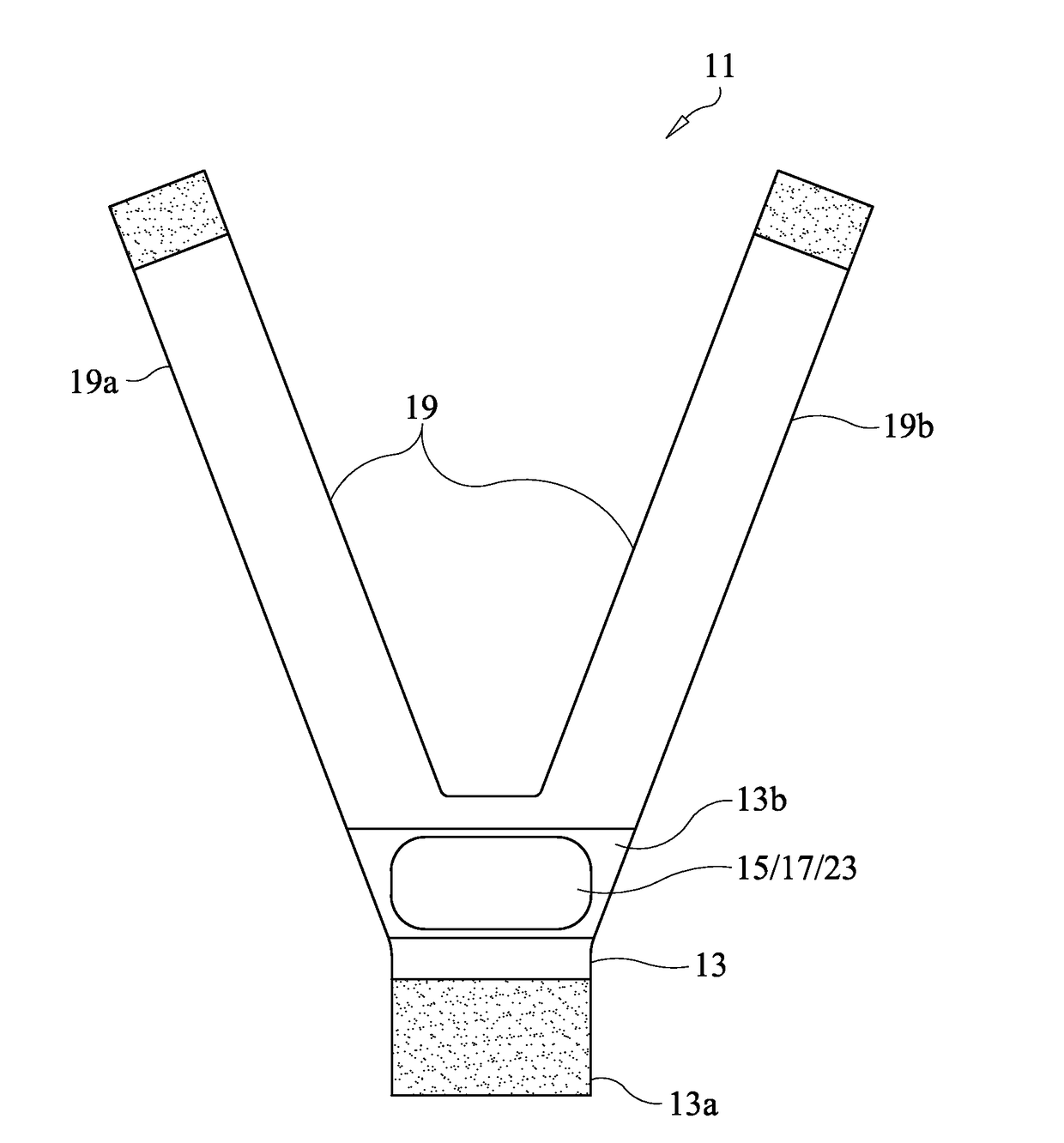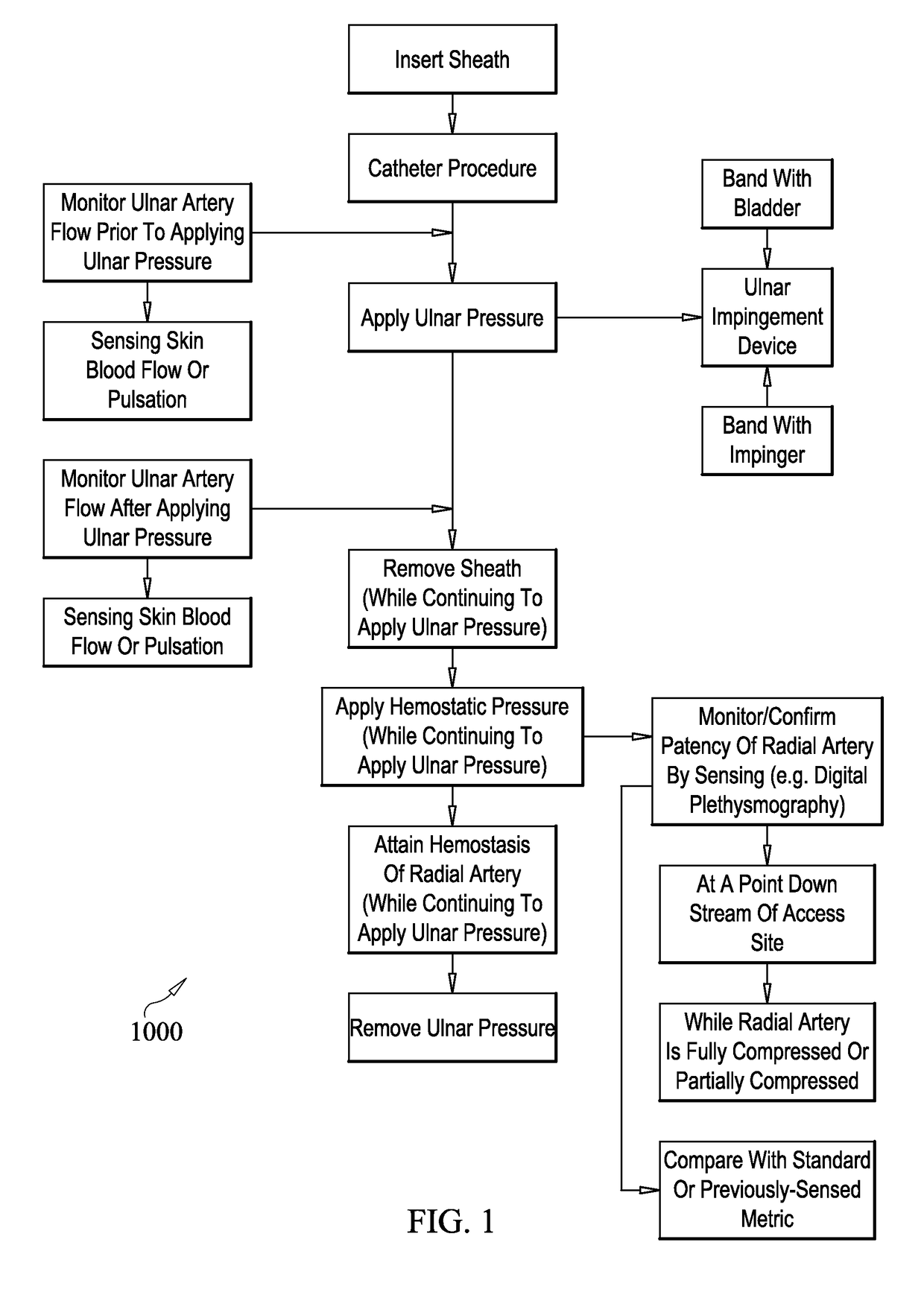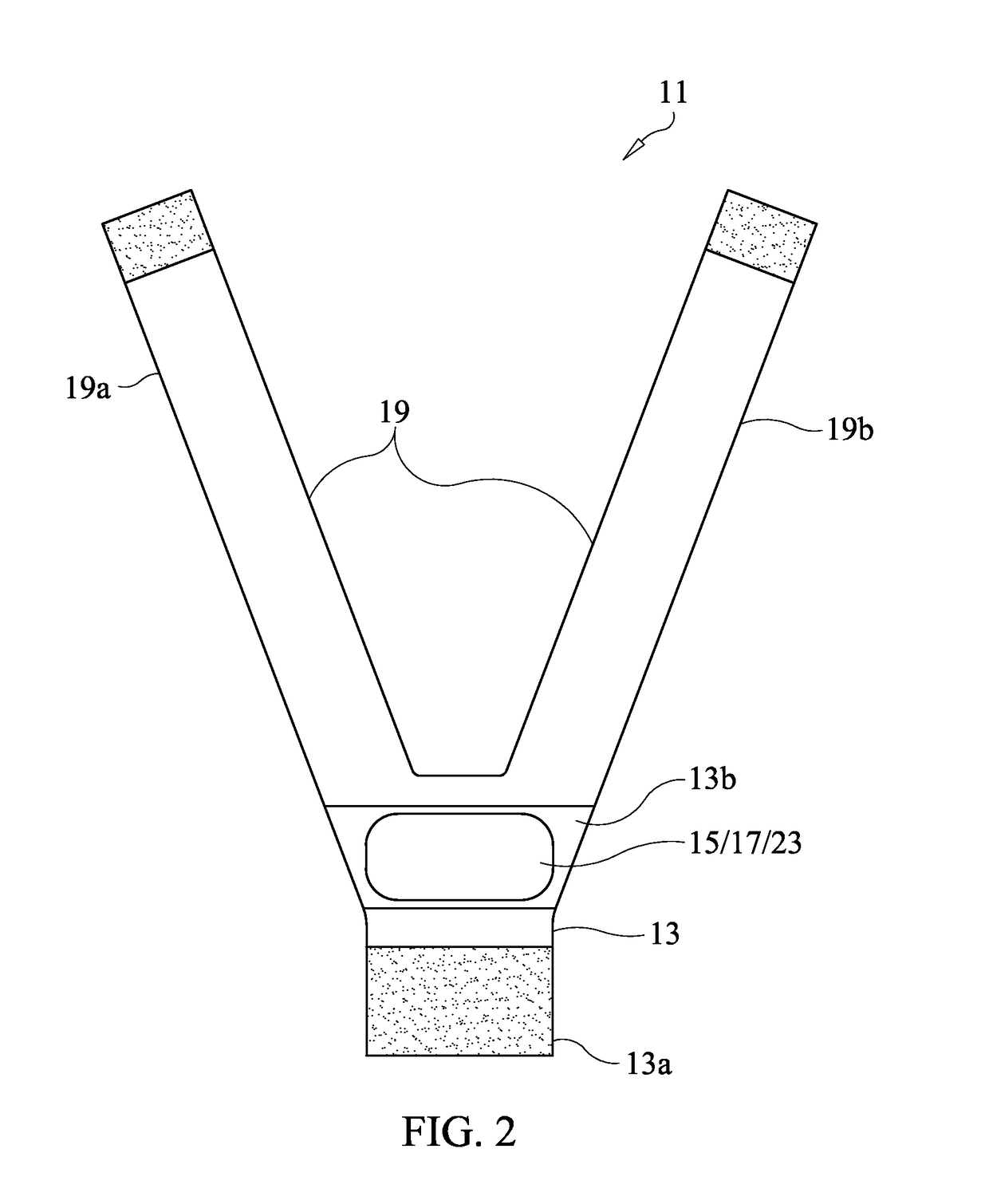Method to stop bleeding, with short hemostasis duration using a low dose of anticoagulant
a technology of radial artery and catheterization method, which is applied in the field of transradial artery catheterization methods and devices, can solve the problems of denying bloodflow further downstream and not being available in the future, and achieve the effect of minimizing the occurrence of radial artery occlusion
- Summary
- Abstract
- Description
- Claims
- Application Information
AI Technical Summary
Benefits of technology
Problems solved by technology
Method used
Image
Examples
Embodiment Construction
[0027]The invention is directed to a method of obtaining patent hemostasis of the radial artery by compressing the un-instrumented ulnar artery to increase radial artery flow while applying pressure to the radial artery access site. The invention further concerns a device for applying blunt pressure to the ulnar artery, and a method of use.
[0028]A present invention method of catheterization of the radial artery directed at minimizing occurrences of radial artery occlusion is disclosed. Referring to FIG. 1 specifically, and the Figures in general, the method 1000 comprises inserting a sheath into the radial artery of a patient at an access site. A sheath, as disclosed herein, is understood to encompass any device inserted into the radial artery and used to permit the access of instrumentation into the radial artery. The desired catheterization procedure is then performed using the sheath to provide instrumentation access the radial artery.
[0029]Once the catheterization procedure is c...
PUM
 Login to View More
Login to View More Abstract
Description
Claims
Application Information
 Login to View More
Login to View More - R&D
- Intellectual Property
- Life Sciences
- Materials
- Tech Scout
- Unparalleled Data Quality
- Higher Quality Content
- 60% Fewer Hallucinations
Browse by: Latest US Patents, China's latest patents, Technical Efficacy Thesaurus, Application Domain, Technology Topic, Popular Technical Reports.
© 2025 PatSnap. All rights reserved.Legal|Privacy policy|Modern Slavery Act Transparency Statement|Sitemap|About US| Contact US: help@patsnap.com



